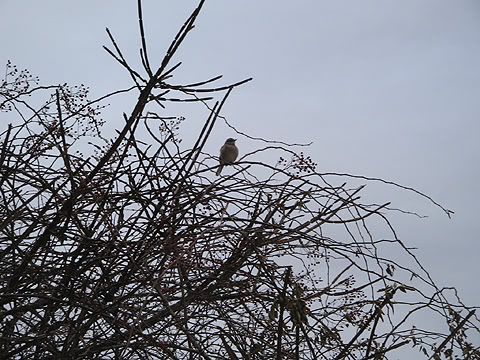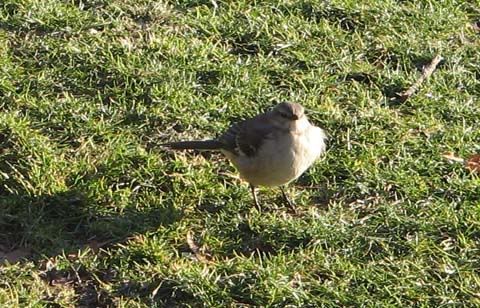365 urban species. #001: Northern Mockingbird

Northern Mockingbird Mimus polyglottos
Well known and well loved, the mockingbird is a fairly common urban bird in many areas. Before the middle of the twentieth century, however, it was very rare in New England. One of the things we see time and time again is that urban species are "preadapted" to living alongside humans: they have some habitat requirement that just happens to coincide with the way that humans alter the landscape. The widespread planting of multiflora rose (the clusters of berries in the above photo are multiflora rose hips), seems to be responsible for much of the expansion of the mockingbird's range. The tangles of thorny growth make for good nest sites, and the persistent fruits provide winter food.
Another factor favoring mockingbirds as urban animal is their behavior; in short, they are bold--not deterred by human activities and pets, often attacking cats and other animals that come too close to a nest. Both males and females sing, using snippets "sampled" from other birdsong, in phrase-groups of three. Unpaired males will even sing at night--once I left a party in the wee hours to hear a loud emphatic mockingbird in the needles at the top of a suburban spruce tree. I stood listening for a few minutes, amazed and incredulous; I actually thought that it may have been a recording that someone had installed for some reason!
Mockingbirds are notable urban animals in another way: they will incorporate human-produced sounds in their repertoire. Car alarms and cell phone tones have made their way into the songs of contemporary mockingbirds.

